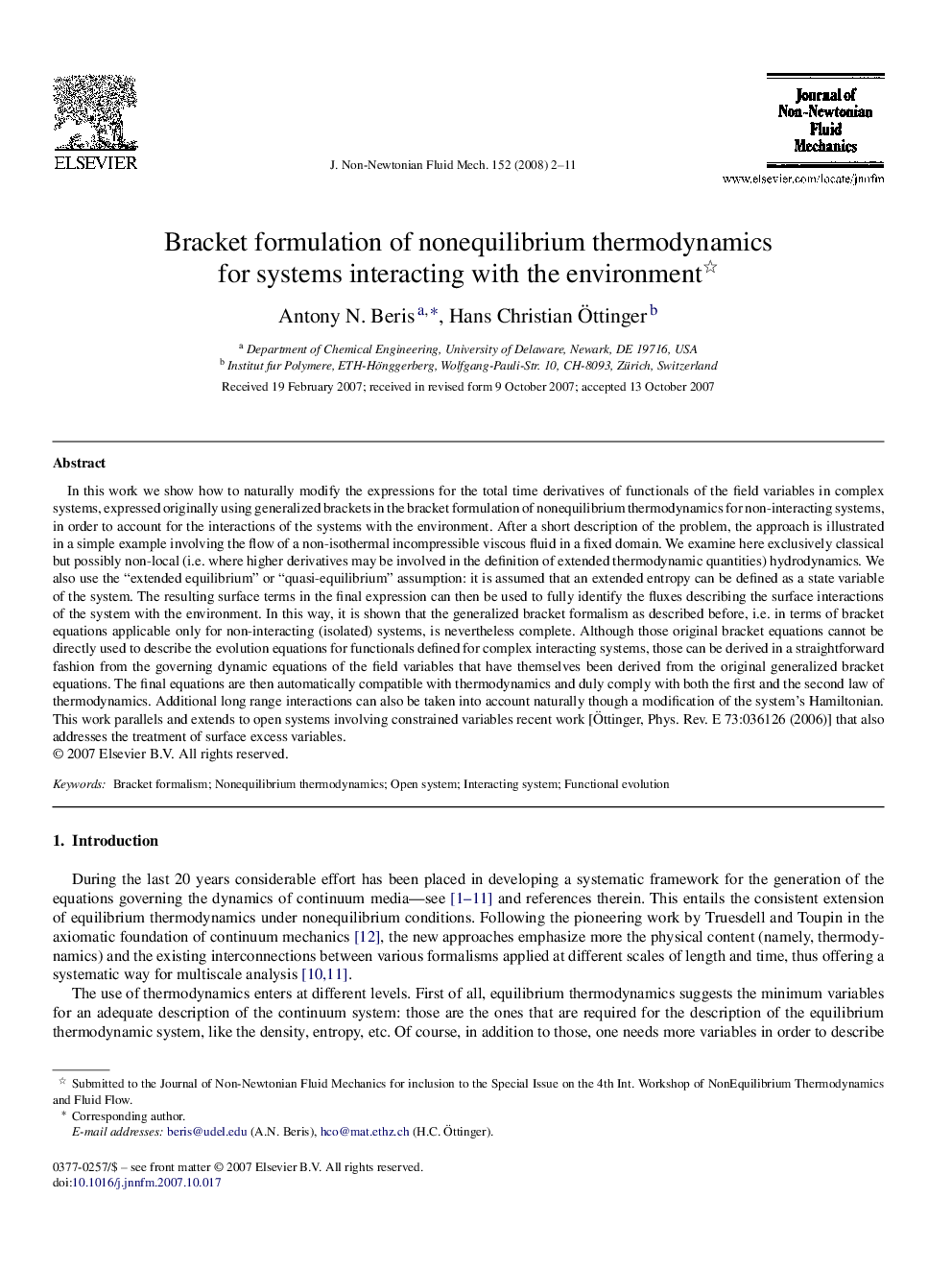| Article ID | Journal | Published Year | Pages | File Type |
|---|---|---|---|---|
| 671224 | Journal of Non-Newtonian Fluid Mechanics | 2008 | 10 Pages |
In this work we show how to naturally modify the expressions for the total time derivatives of functionals of the field variables in complex systems, expressed originally using generalized brackets in the bracket formulation of nonequilibrium thermodynamics for non-interacting systems, in order to account for the interactions of the systems with the environment. After a short description of the problem, the approach is illustrated in a simple example involving the flow of a non-isothermal incompressible viscous fluid in a fixed domain. We examine here exclusively classical but possibly non-local (i.e. where higher derivatives may be involved in the definition of extended thermodynamic quantities) hydrodynamics. We also use the “extended equilibrium” or “quasi-equilibrium” assumption: it is assumed that an extended entropy can be defined as a state variable of the system. The resulting surface terms in the final expression can then be used to fully identify the fluxes describing the surface interactions of the system with the environment. In this way, it is shown that the generalized bracket formalism as described before, i.e. in terms of bracket equations applicable only for non-interacting (isolated) systems, is nevertheless complete. Although those original bracket equations cannot be directly used to describe the evolution equations for functionals defined for complex interacting systems, those can be derived in a straightforward fashion from the governing dynamic equations of the field variables that have themselves been derived from the original generalized bracket equations. The final equations are then automatically compatible with thermodynamics and duly comply with both the first and the second law of thermodynamics. Additional long range interactions can also be taken into account naturally though a modification of the system's Hamiltonian. This work parallels and extends to open systems involving constrained variables recent work [Öttinger, Phys. Rev. E 73:036126 (2006)] that also addresses the treatment of surface excess variables.
